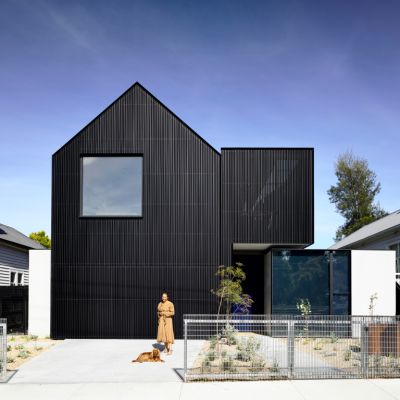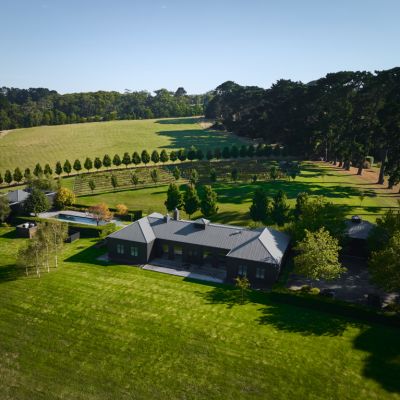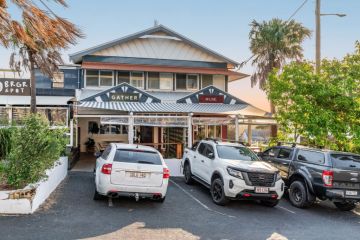How first home buyers could slash their repayments by $1800 a month
First home buyers struggling to afford a property could soon take advantage of two types of federal government help, but one will offer lower mortgage repayments and the other promises better capital growth over time.
The new Help to Buy scheme will start next year and allow a home purchase with a low 2 per cent deposit. Under a shared equity model, the government co-purchases a 30 per cent to 40 per cent stake in the home, and the buyer takes out a loan for the rest.

It’s different to the existing First Home Guarantee program, which allows a purchase with a 5 per cent deposit and no lenders’ mortgage insurance, and a loan for the balance.
Buyers who co-purchase with the government and get a smaller loan would save as much as $1829 on their monthly repayments, Canstar modelling shows.
But the government’s stake in the home means that these buyers would have less capital growth once it came time to sell and repay the government with the proceeds.
This means buyers could find it harder to take their second step on the property ladder.
The Help to Buy scheme was a part of federal Labor’s 2022 election commitment and would run for four years from 2024. It would support 40,000 households in getting a mortgage with a deposit as low as 2 per cent. The legislation to create the scheme is yet to pass parliament.
A Sydney buyer who took part in the scheme and bought an existing property at the maximum allowed value of $900,000 would have a monthly repayment of $3963, compared to $5792 for the First Home Guarantee.
Assuming that property prices rise at the same pace over the next decade as in the past, the buyer would have $895,564 equity after 10 years and the government would have $599,859. The modelling also assumes the buyer uses a 5 per cent deposit rather than the minimum 2 per cent.
In the First Home Guarantee scheme the owner would have $1,262,758 in equity.
In Melbourne, where the upper limit was $800,000, the repayments for the shared equity model would be $3523, but they would be $5149 with the low deposit model.
After 10 years, the homeowner who co-purchased with the government would have $592,294 in equity compared to the $831,362 they would have had if they bought without.
In Brisbane, where the limit was $700,000, Help To Buy and First Home Guarantee repayments would be $3082 and $4505, respectively. A Perth buyer would save $1219 per month if they opted for the Help To Buy scheme.
Canstar group executive financial services Steve Mickenbecker said buyers who take part in the Help To Buy scheme would need to be well-informed about its downsides and upsides.
“I think buyers will go into this clear eyed. They’ve got to,” he said. “You’ve got to say to yourself: OK this gets me into the property I want now, repayments I can afford now and a toehold into the property market. But the time will come when I will sell or up-trade and I won’t have the money I would have otherwise.”
The government would also have more equity in the property than the buyer for the early portion of the loan – meaning that if the home was sold, the government would walk away with more cash than the owner.
“In the early stages of the loan every repayment you’re making has a high interest component and a very small principal reduction. Over time the amount of principal you’re paying increases and the interest payment is decreasing,” he said.
“If you get through to the full 30 years … you would see the split between you and the government hold true.
“But until you get to that point, the bank has a share in your 70 per cent.”
Independent economist Saul Eslake said the scheme should be effective, “provided [first home buyers] don’t end up buying a more expensive house” than they otherwise could afford. He said if buyers used it to up their purchasing power, it would continue to destabilise the property market.
“In principle, we have almost 60 years of history that anything that allows Australians to buy more expensive houses results in more expensive houses,” Eslake said.
“The home ownership rate has been going down since any of these schemes have been introduced. Their effect, in practice, whatever their intent, allows people to buy more expensive houses than they should.”
Umwelt Environmental & Social Consultants principal social consultant Dr Katrina Raynor was similarly lukewarm on the scheme.
“Look, it’s OK. It will help individuals. It will probably push up prices for homes that fit in that category,” she said. “But it doesn’t take away from the fact that for three decades, governments have underfunded the thing that actually helps people – and that’s social and affordable housing.
“I don’t think it really counts as an affordable housing policy, to be honest. You can think more strategically about how this policy could be linked to vulnerable groups like older women and tying it to people already living in social housing.”
States
Capital Cities
Capital Cities - Rentals
Popular Areas
Allhomes
More










